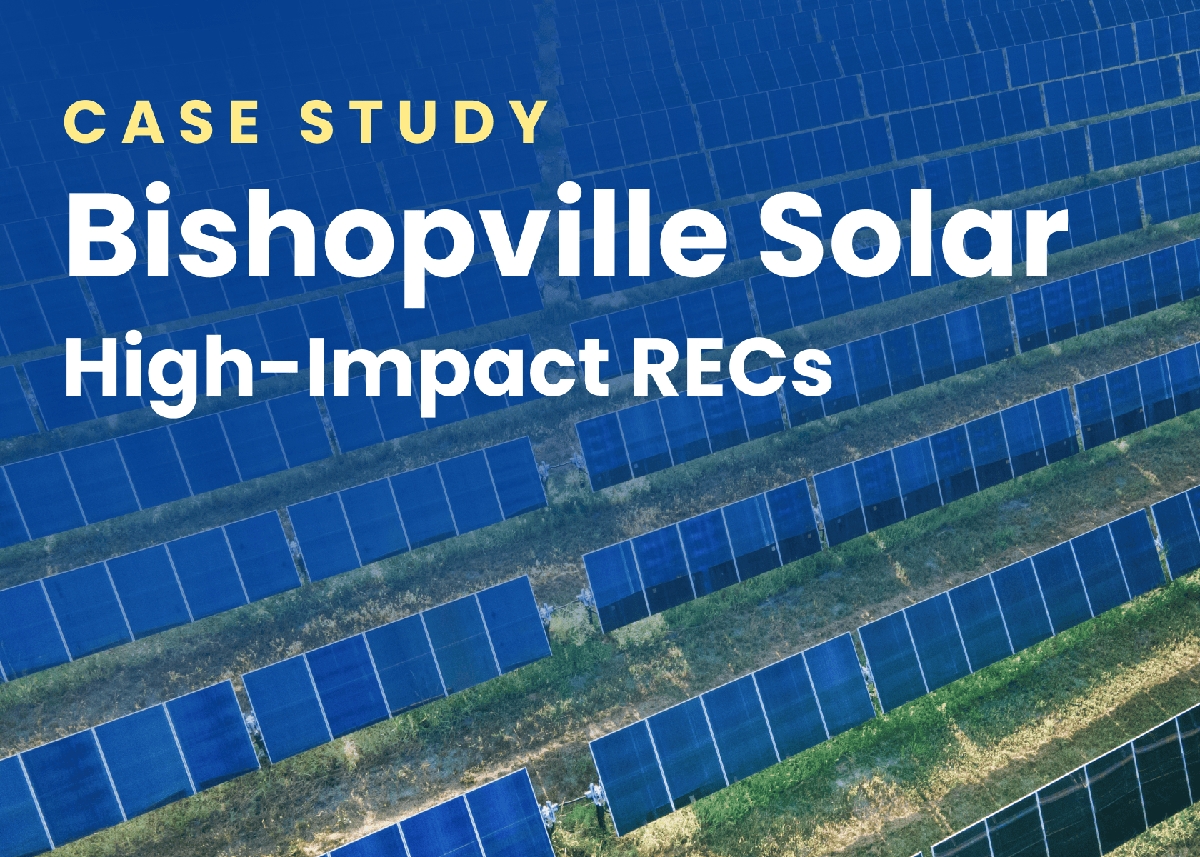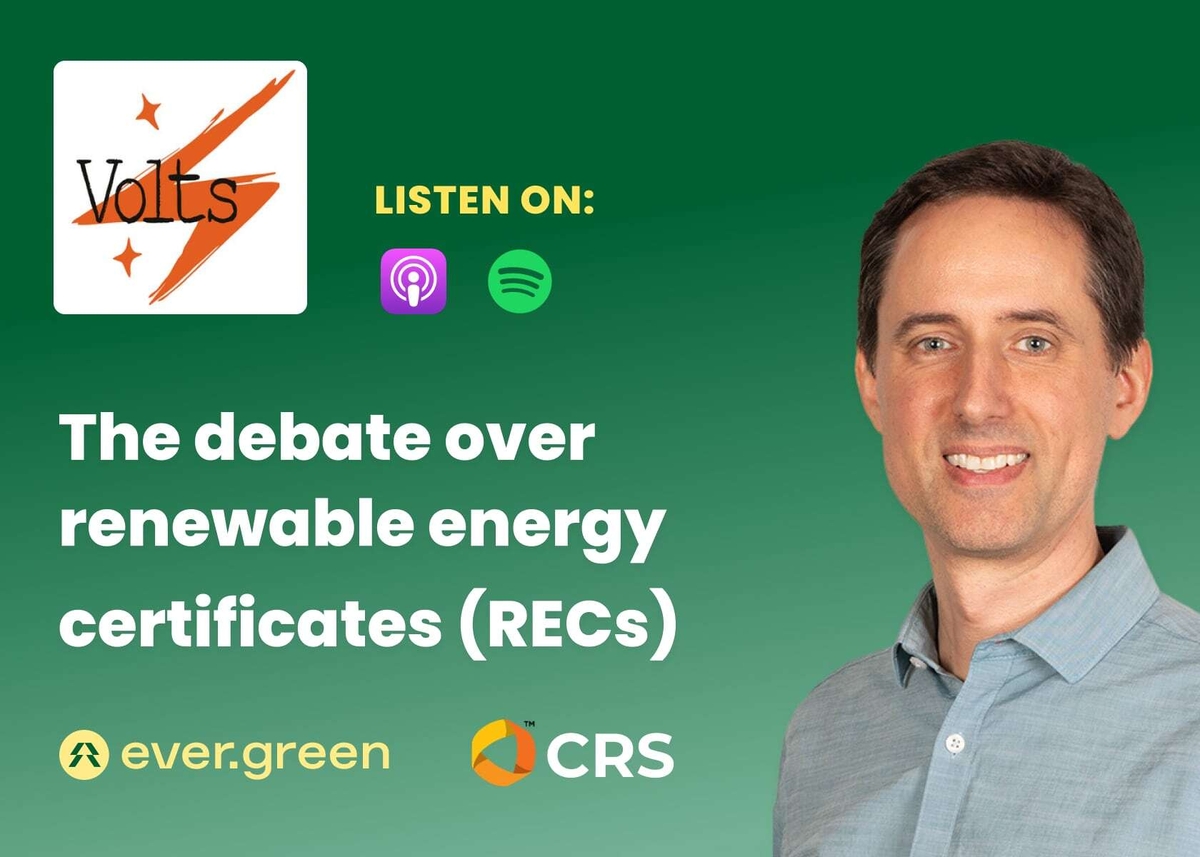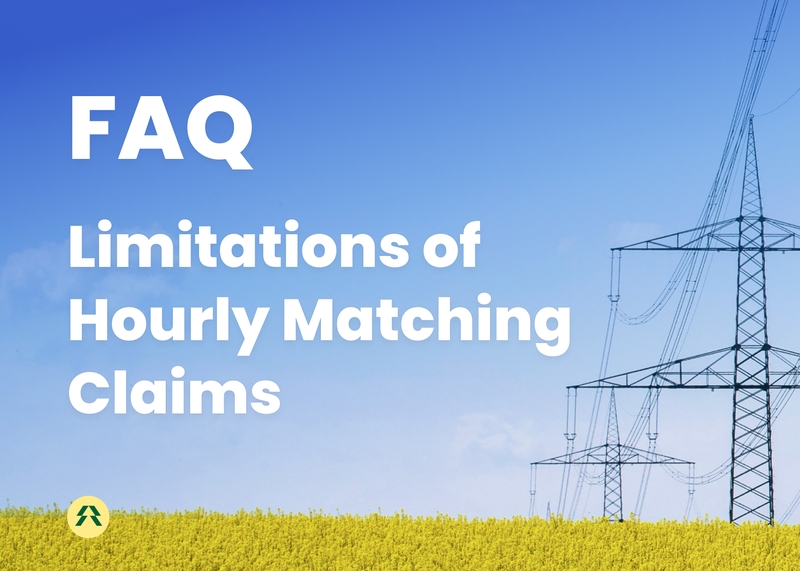Webinar on the Limitations of Hourly Matching Claims
Expert responses to your hourly matching questions, plus registration for Part II webinar with Michael Gillenwater and Michael Leggett. Address implementation costs, contract impacts, and feasibility challenges.
Jul 29, 2025
The response to our webinar "Limitations of Hourly Matching Claims for Scope 2 Reporting" was extraordinary. With 650+ registrants and dozens of thoughtful questions submitted during the live session, the conversation revealed how much the industry is wrestling with the same fundamental questions about impact, measurement, and strategy. Below are some of the questions we received and our answers along with a link to the recording and the slides.
During our webinar, Michael Gillenwater (Greenhouse Gas Management Institute), Michael Leggett (Ever․green Co-founder), and moderator Miranda Ballentine (Green Strategies) tackled the complex question of whether "hourly matching"—requiring companies to match their clean energy purchases to actual consumption hour by hour—represents progress or a costly detour.
Why this matters right now
Standards bodies aren't waiting for perfect consensus. The GHG Protocol revisions are moving forward, and companies are making procurement decisions every day based on evolving guidance. With corporate clean energy procurement representing billions in annual spending, these decisions will directly impact your climate strategy, budget allocations, and competitive positioning
It may be another 10 years before standards are updated again, making the next few months critical for industry input. Whether you're defending your current approach, considering a major strategy shift, or still figuring out where you stand, you're not alone in navigating this complexity.
Can't make the live session? Register anyway—we'll send you the recording and key insights.
Did you miss Part 1?
The discussion between Michael Gillenwater (GHGMI), Michael Leggett (Ever.green), and moderator Miranda Ballentine explored whether more granular accounting actually drives additional clean energy development.
Watch the Full Recording here and download the slides here
Part 2: Continuing the conversation
We've answered the questions asked during the webinar below but realized that there is demand for a more in-depth discussion. We hosted a follow-up webinar on August 7th, 2025 which was all Q&A and no slides. You can view a recording and the answers for part 2 here.
Answers to your questions
We received dozens of questions during the live session that we couldn't address in real time. The proposed changes to the GHG Protocol could fundamentally reshape how companies account for billions in annual clean energy spending.
Below are responses to the most pressing questions from our first session.
The papers we referenced during the webinar:
- McKinsey study on 24/7: Rethinking Your Company's Clean Power Strategy
- Gillenwater and Leggett’s paper: Limitations of Hourly Matching on Scope 2 Reporting
- GHG Protocol Scope 2 proposal
- Notes from other working groups about changes to other guidelines: Standards Development and Governance Repository
How can we effectively change the conversation/narrative from bean counting to instead maximizing incentives for buyers to support the highest impact projects?
This is a really important question. It may be that trying to make that change inside the market-based method (still inventory or allocational accounting) makes it hard to make progress here. Should we instead be pushing for consideration and rewarding impact (moving from counting to maximizing emissions impact) outside the inventory? And if it did move, what claims would progress in that area make? Would a company take action both under the market-based inventory AND under consequential impact outside the inventory?
The GHG Scope 2 update mentions a "combined framework" of inventory reporting and impact reporting. What does this mean? Is it "either or" or "and"? If SBTi continues to use inventory reporting, how will impact reporting be recognized?
It's still unclear. The consequential impact reporting is being considered is outside the inventory framework and may not even be included in the revisions sent out for public comment. If it is added, it is not clear how it intersects with inventory accounting, requirements or what claims come from using the impact reporting (probably not 100% RE but maybe net-zero scope 2 emissions). Also consider that SBTi is currently considering consequential impact which raises the possibility of GHG Protocol and SBTi not being aligned. We will continue to push for the inclusion of impact reporting and greater clarity on these and other questions.
Would you recommend keeping Scope 2 location-based (S2 LB) and market-based (S2 MB) methods for inventory accounting along with a third consequential marginal impact method, or switching to location-based plus a separate consequential impact method?
Michael Gillenwater: I recommend improved location-based accounting (with better hourly grid factors) and a separate consequential impact reporting where market-based claims would be accounted for along with other kinds of interventions. This would eliminate market-based inventory. RECs would still exist, but we'd account for them based on their actual impact, not as a way to estimate GHG inventories. Read more about this topic in my essay: What is the GHG Accounting Market-Based Mistake? My next essay will detail what this multi-statement corporate reporting framework could look like. Subscribe to the GHGMI newsletter to stay informed.
How would the accounting for hourly matching work? Would this require hourly granularity electric data? If so, how could companies compel suppliers to provide hourly consumption totals?
Yes, you'll need hourly electricity usage data from utilities for each site. If that's not available, GHG Protocol should provide methods to estimate hourly consumption from annual or monthly data. We're concerned about the cost and complexity of this work, though proponents believe this will get easier as demand for granular data increases.
What happens to existing VPPAs and RECs when the GHG Protocol update is released? Do you think there will be a grandfathering rule that allows those RECs to count toward Scope 2 goals? How can we future-proof current contracts?
Grandfathering clauses are essential, and we're advocating for their inclusion. The GHG Protocol draft includes such a clause, but SBTi's draft changes does not (yet). We expect PPAs and VPPAs to broadly qualify for their original contract term, but specific requirements aren't yet finalized.
What role will utilities play going forward? There seems to be a decreasing level of useful disclosure (compliant with S2 Quality Criteria). Will their disclosure be important for understanding grid intensity at a given time, and do we need a strategy to incentivize utility transparency?
Utilities will play an increasingly important role in numerous ways. Data around the grid mix and emissions (both average and marginal) exists. More work is to be done on availability of more granular data for electricity usage. Some utilities also see a shift to hourly matching as an opportunity to offer new green tariffs backed by existing nuclear and hydro generation which could be a step backwards. Updated Scope 2 guidelines will need to set the standards for what counts, likely excluding "Standard Supply Service."
Will the GHG Protocol require more time-specific grid emission factors like hourly or peak vs. off-peak? Current guidelines allow the use of annual emissions factors, which do not consider shifting consumption patterns in decarbonization planning.
Yes. More granular emissions factors are proposed for both location-based and market-based methods, not just annual averages.
Buyer representation (corporates) in the GHGP scope 2 working group seems low at around 16%, while data service providers who profit from hourly matching are well-represented. Of those, many are some of the largest energy buyers in the nation (Microsoft, Google, PepsiCo, etc). How do we reconcile the idealistic, and scientific approach of the standard the with corporate, bandwidth-strapped reality of the 99% of companies that don’t have dedicated RE teams?
This is exactly why we (Ever․green and Greenhouse Gas Management Institute) wrote our paper. We need to better describe implementation challenges from requiring local+hourly matching, demonstrate how long-term contracts (like PPAs) are put at risk, and encourage more companies to understand these changes and speak up during public comment periods.
What are the best practices for Scope 2 baseline comparisons with hourly matching? Do you compare to prior year, prior week, same region without renewables?
Inventory accounting is not compared to a baseline. For impact assessment, research and modeling typically compares the same hour under different conditions. For example, REC avoided emissions calculations estimate what generation source (and its emissions factor) would have operated if the renewable generation wasn't there.
Could measuring inventory and impact side by side discourage companies from reducing actual physical emissions?
There are tradeoffs, but cost savings remain the biggest incentive for physical emissions reductions. Location-based emissions incentives also persist. While hourly + location matching may produce more accurate usage claims, it doesn't necessarily mean a business has "reduced actual physical emissions" since market boundaries balance improved claims with feasibility.
Is electricitymaps.com's areas reliable for hourly emissions data instead of eGRID subregions?
eGRID subregions have strong traction for U.S. market boundaries and are more granular than electricitymaps.com, which the GHG Protocol prefers. Also, eGRID is more stable than commercial platforms.
How do customer-site batteries complicate data reporting and auditing?
Batteries add significant complexity. Less so if batteries are only ever charged by on-site solar. The Greenhouse Gas Management Institute published a detailed report on battery GHG accounting that explores these challenges, though it's more focused on utility perspectives.
Is it technically feasible to generate RECs with hourly matching characteristics? Will it be easy for registries and others to generate RECs with 24/7 and matching characteristics?
Adding timestamps and metadata to RECs is technically straightforward. Validating the time stamps may be more difficult. The commercial challenge (finding and buying RECs that match your hourly load) is much harder. There will be instances where a high percentage hourly matching is relatively easy to do. Einstein Bros achieved > 90% from an existing VPPA with a wind farm and solar RECs from ENGIE. But that does not mean it will be easy for many or most companies. Even Google has gone from 67% hourly matching down to 64%. Some of the proponents of hourly matching say it being harder is part of the point – for the difficulty in the voluntary market to match the difficulty of decarbonizing the grid in the real world.
How can the company that buys REC power from utility company get visibility to dispatchable renewable power, and whether that power will reflect battery storage on the grid company side?
This requires much greater transparency from utilities about what you're purchasing. While some providers like Ever․green include hourly metadata in REC contracts, it's not standard with utilities or most brokers. Proponents of 24/7 believe it will become more standard to get time stamps on each REC to support hourly matching. For storage, you need proof that the battery was charged with clean energy for clean discharge—very difficult unless the battery is behind-the-meter or co-located with the renewable project.
If the inventory is indeed the place for the most accurate, science/evidence-based record of the emissions that a company is responsible for, then I'm not following why moving to greater granularity/accuracy would be incompatible with the inventory? In particular given that it seems you are in support of the impact/emissionality metric is being developed alongside.
First, it isn't incompatible. Location-based accounting should indeed move to more granular data for a more accurate record of the emissions a company is responsible for.
But the market-based method was designed to incentivize impactful market action, not just accurate accounting. Keeping market action within inventory accounting clouds the decision: Do you optimize for accurate usage claims OR maximize incentives for bold impactful climate action? These goals sometimes conflict.
Still have questions after reading these responses? That's exactly why we're hosting Part II. Register to get specific questions answered live during our next webinar.






